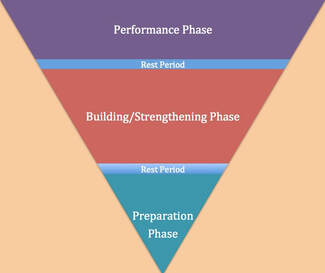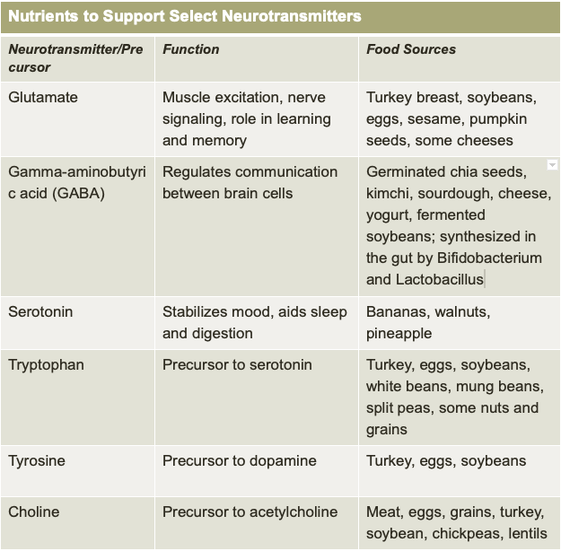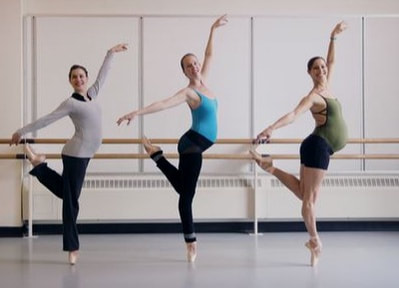|
Irritable bowel syndrome, or IBS, is a class of disorders involving gut-brain interaction that affects up to 1 in 10 Americans. Diagnostic criteria includes abdominal pain at least once per week on average over the past three months associated with changes in stool frequency or form. Symptoms affect the large and small intestines and typically include periodic or chronic bloating, diarrhea, constipation, gassiness, and cramping.The cause of IBS is unknown, however genetics, allergies, infection, lifestyle, and gut microbiota may contribute to IBS and stress and certain foods may trigger symptoms. The large intestine has nerves that communicate with the brain, so stress can stimulate intestinal spasms resulting in pain and discomfort. Specific foods can initiate episodes of IBS, and many people with IBS notice that symptoms worsen after consuming high-fat foods or large meals.
Until recently, the medical advice provided to patients with IBS was to reduce stress and eat more fiber. Research has indicated that IBS can be managed with a focus on diet composition and eating habits, possibly with the assistance of medications, probiotics, and stress management. Consider the following modifications to your diet to provide relief from IBS and prevent future flare-ups.
2 Comments
By Erica Hornthal, LCPC, BC-DMT “The Therapist Who Moves You” These days you may find it harder to stay present, especially when being in the moment reminds us that things are not what they used to be. The inability to be present can lead to a decrease in body awareness which has a huge impact on our movement overall.
You have the power to slow down, observe, and take action. By challenging your status quo and moving outside your comfort zone you create greater capacity to handle stress and the emotions that come with it. Think of it as your emotional gas tank. Adding to your movement profile, or all the movement at your disposal, creates a larger reserve which means less breakdowns on the side of the road as well as less trips to the gas station. When you increase your movement and body awareness you get more emotional miles per gallon. So how do you maximize your emotional miles per gallon through movement to support resilience and overall well-being? Here are some tips:
Looking for more support? My workbook, Body Awareness for Mental Health, is for you! Rooted in theories and methodologies from the field of dance/movement therapy this workbook is designed for:
Stress is the tension felt when faced with a new, unpleasant, or threatening situation. The hormone surge we experience during stress produces an automatic physical reaction as well an emotional response that can be controlled and managed. The physical signs of stress include increased heart rate, perspiration, headaches, appetite changes, dry mouth, frequent urination, and diarrhea or vomiting. The emotions that accompany stress are typically anxiety, irritability, and fearfulness which often lead to impulsiveness, increased use of drugs or alcohol, and overeating. It is very important to find alternative coping strategies for stress that aren’t harmful to your health and performance. Taking care of your body and mind with adequate sleep and proper nourishment are critical. If overeating during stress is an issue for you, it is also helpful to establish an emotional outlet other than food. Fueling your body at regular intervals with balanced meals and snacks can often prevent the urge to overeat, even during stress. There are a number of nutrients related to brain function, including vitamin B12, B6, and folate. Some good sources of B12 are beef, fish, shellfish, dairy, and fortified grains. Vitamin B6 can be found in meats, whole-grains, vegetables, nuts, and bananas. Dark leafy vegetables, okra, asparagus, fruits, beans, yeast, mushrooms, orange juice, and tomato juice, and fortified grains are good sources of folate. With the wide array of food sources, a balanced diet generally provides adequate quantities of these nutrients, so it is only necessary to supplement if a deficiency exists. The essential omega-3 fatty acids are also necessary for mental and physical health due to their role in regulating inflammation and interacting with mood-related molecules in the brain. Food sources of omega-3 fats include fatty fish, flax and hemp seeds, walnuts, and canola oil. Additionally, there are amino acids and other dietary components that serve as precursors for neurotransmitters that function in mood stabilization, feelings of pleasure, learning and memory. The table below outlines the functions and food sources of some relevant examples. With adequate intake of high-quality proteins and/or a variety of seeds and legumes, adequate intakes of these dietary components can be achieved. It is important to recognize that a lack of the precursors needed to synthesize neurotransmitters can result in altered mood and poor coping skills. Consider integrating food sources of these neurotransmitter precursors, B vitamins, and omega-3 fatty acids to promote mental stability and wellness, even during the most stressful of times! References:
The VITamin D and OmegA-3 TriaL-Depression Endpoint Prevention (VITAL-DEP): Rationale and design of a large-scale ancillary study evaluating vitamin D and marine omega-3 fatty acid supplements for prevention of late-life depression. Contemporary Clinical Trials, May 2018. Haggerty, J. (2020). Vitamins for Bipolar Disorder. Psych Central. Retrieved on October 8, 2020, from https://psychcentral.com/lib/vitamins-for-bipolar-disorder/ Anemia is a common blood disorder in which the body lacks adequate red blood cells to carry oxygen to tissues. The reduced oxygen delivery results in fatigue and weakness, and can severely interfere with exercise capacity and performance. Causes of anemia include inadequate dietary intake, poor absorption of nutrients, blood disorders, or lack of red blood cell production from the bone marrow. Nutritional anemias are usually detected with blood tests that assess the size and number of red blood cells.
Symptoms of anemia include:
Iron is important at any age, but particularly during stages of rapid growth. The high demands of dance training make dancers susceptible to iron deficiency because iron is lost in sweat. Menstruating females are at additionally elevated risk of developing anemia. The average adolescent should consume 6-8 mg of iron each day and dancers and athletes should aim for 9-12 mg per day to help distribute additional oxygen to working muscles and account for any iron that is lost through sweat. The second and third most common nutritional anemias are related to folate and vitamin B12. Vitamin B12 deficiency anemia is unique in that it causes neurological problems and can take years of inadequate supply before symptoms develop. Inadequate levels of B12 are sometimes caused by poor absorption due to a lack of intrinsic factor (the protein that transports B12 to its absorption site in the gut) or a stomach disease. Folate deficiency manifests quickly and is typically a result of a poor diet or alcohol abuse. Folate needs are approximately 200-400 mcg/day and needs increase to 500-800 mcg/day during pregnancy and breastfeeding. Deficiencies of copper, zinc, and vitamins C, A, and B6 can also contribute to anemias. Eating a balanced diet can help you avoid both iron and vitamin-deficiency anemias. There are two kinds of iron found in foods. Iron that is found in animal products (e.g., beef, chicken, eggs) is called heme iron, and the body can absorb 15-18% of heme iron. In contrast, the body only absorbs approximately 5% of non-heme iron, which is found in plant foods such as grains, dark leafy greens, dried fruits, and nuts. Vitamin B-12 is found in meat and dairy. Citrus, green leafy vegetables and legumes are rich in folic acid. A daily multivitamin can also help fill in any gaps in nutrient intakes from food and help prevent nutritional anemias. Be aware that iron supplements can result in toxic levels of the mineral and should only be used if instructed by a physician. References: John Beard, Brian Tobin, Iron status and exercise, The American Journal of Clinical Nutrition, Volume 72, Issue 2, August 2000, Pages 594S–597S, https://doi.org/10.1093/ajcn/72.2.594S Faramarz Naeim, Chapter 23 - Disorder of Red Blood Cells: Anemias, Editor(s): Faramarz Naeim, P. Nagesh Rao, Wayne W. Grody, Hematopathology, Academic Press, 2008, Pages 529-565, ISBN 9780123706072, https://doi.org/10.1016/B978-0-12-370607-2.00023-5.  Photo credit: The Healthy Dancer Blog Photo credit: The Healthy Dancer Blog Dancers often ask themselves: Do I need to take time off after a performance? How long should I take for a break? How can I safely train to get in shape after a break? Is it safe to do multiple dance intensive programs? Dancers need to know that sufficient rest and recovery periods are needed to reduce the negative effects of overtraining. Lack of recovery time can adversely affect technique, energy level, mood, performance, strength, and injury risk. In addition, a gradual return back to dance is needed after a break to avoid injury and can be implemented through a periodization program. Periodization involves a gradual increase in training intensity alternating between work and rest with the dance performance at the peak of the cycle. This type of progression allows for recovery and prevents overtraining. A periodization schedule can be broken up into four phases: preparation, building, performance, and rest.
Periodization is underutilized in dance training, yet is essential for ensuring peak performance and longevity in dance. If you have been on a hiatus from your typical dance class schedule, consider using a periodization approach as you return to your regular dance training. References: Quin, Edel & Rafferty, Sonia & Tomlinson, Charlotte. (2015). Safe Dance Practice: An applied dance science perspective. 4/7/2020 1 Comment KEEPING IN SHAPE DURING A BREAKSET GOALS:
TIPS FOR SETTING GOALS
USE THIS TIME TO CATCH UP ON REST:
MAINTAIN ADEQUATE NUTRITION:
IMPROVE OVERALL FITNESS LEVEL
Online resources: *Health en Pointe individual nutrition and physical wellness sessions (by appointment) *Lisa Howell ballet blog training at home series: https://www.theballetblog.com/blog/training-at-home/; *Dance prehab digital for videos to improve dance foundations as well as individual wellness/dance-specific training sessions: https://danceprehab.com/login/) Inflammation is the body’s normal response to promote healing when the body is fighting infection related to injury, wounds, allergens, toxins, or infection. Typical signs of inflammation include swelling, pain, and redness. In contrast, signs of inflammation may not be apparent with chronic inflammation. Chronic inflammation is typically caused by excess body fat or immune dysfunction. While acute inflammation promotes healing, chronic inflammation can result in DNA damage and increase cancer risk.
Despite the numerous “anti-inflammatory diets” promoted online, research is barely emerging in regards to diet and inflammation. So far, scientific studies indicate that consuming a variety of nutritious foods may help reduce inflammation and keep chronic inflammation at bay. Foods that enhance immune function are also important in fighting inflammation. Here is what we know thus far about foods and inflammation:
Tips for reducing inflammation:
In addition to a healthy diet, inflammation can be reduced by getting adequate sleep, remaining physically active most days of the week, and maintaining a healthy weight.  Once a dancer is cleared to begin pointe work, they must find the most appropriate pointe shoe. Locating an experienced pointe shoe fitter is essential. Josephine Lee is the founder of ThePointeShop and is a former dancer and highly experienced pointe shoe fitter. Here are some of the tips she offers to the novice pointe student: Should pointe work hurt? Pointe work is not comfortable but it should not be so painful that you would want to quit. If it is, the dancer may need to get reassessed to look at the fit of the shoe and/or address any technical faults. Will I always stick with the same shoe type? The shoes you start with will typically be different than shoes you wear as you reach a more experienced level. Some dancers stick with the same shoes throughout their career but it is more common to see them switching shoes especially when you are starting out. How often do I need to get re-fitted? For the first couple years you are en pointe, it is recommended that a dancer gets re-fitted every time they need new shoes. Once you become a bit more experienced and are reordering shoes more frequently, you can just get reassessed every year or whenever you are experiencing issues. Why can’t I get over the box? This can be attributed to the wrong box shape, incorrect vamp length, incorrect shank hardness, foot/ankle weakness, or lack of range of motion in the foot/ankle. Why is my foot unstable en pointe? It could be due to the box being too tapered or narrow, or a shank that is too soft or hard. A tapered box results in a more narrow base of support, making it difficult to balance. A shoe that is too soft may not give enough support while a shoe that is too hard may be too difficult to control. Do stronger feet need a harder shank? Stronger feet don’t usually require a hard shank. What type/how much padding do I need? Less is more. Less padding creates better control for foot articulation and balance. The purpose of padding is to fill in the spaces of the shoe so that your foot fits the shoe better. Do soft shoes die faster? Not necessarily. Sometimes hard shoes may snap and die faster. Having poor muscle/motor control will cause a shoe to break in faster. On the other hand, if the shoes are too soft, the shank may bend under the weight easier. How do I get my pointe shoes to last? Moisture kills the shoe, so keep the shoe dry! It takes 36 hours for a pointe shoe to die and it is recommended to rotate shoes. Using jet glue and carrying the shoes in a mesh bag outside of the dance bag will help reduce excess moisture. Why does my foot sickle when I go en pointe? This could be a result of the shoe being too tapered, incorrect shank hardness, pain in the big toe, or the shoes may be the wrong width. What is the best time of day to get fitted? It depends on how the dancer’s foot responds to dancing. Some feet shrink after dancing, and others will swell. It is very individualized. During pregnancy, a woman’s body will change more in nine months than it’s likely to change during any other life stage. Because of these changes, pregnant women are generally encouraged to rest and enjoy “eating for two”. For dancers, taking it easy is not always ideal or even possible. Pre-professional and professional dancers often continue to train until their due date and will return back to the studio soon after delivery. What does training while pregnant involve? Will dancing while pregnant harm an unborn child?
Traveling to a summer intensive or performing on tour can be exciting and educational, however being away from home presents several challenges related to good nutrition. Many factors may be out of your control, so it is important to be prepared and resourceful as you try to maintain some semblance of your usual routine. Below is some practical advice for nutrition during travel.
Have a safe, successful and healthy trip! |
CategoriesAll Cross Training Injury Prevention Nutrition Recipes Wellness Archives
October 2021
|



 RSS Feed
RSS Feed